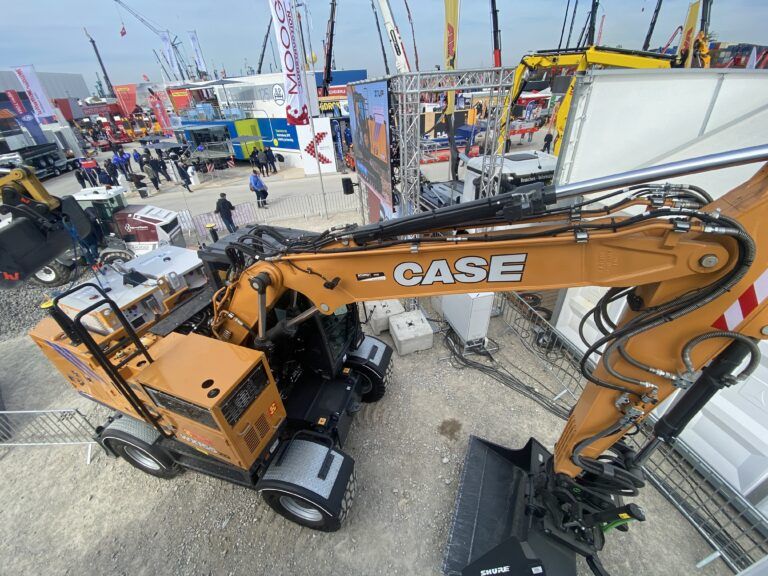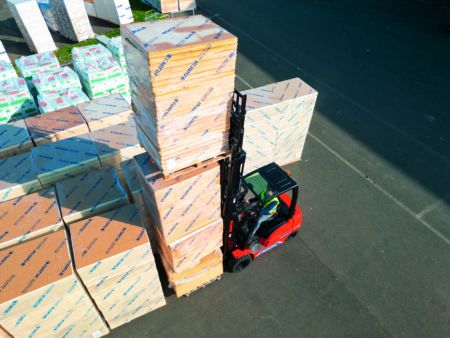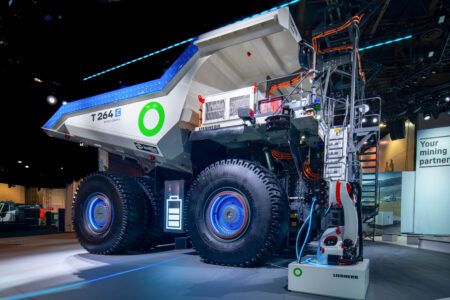Case Construction Equipment has announced a new partnership with ZQuip to deliver vehicles with swappable energy modules that eliminate range anxiety while offering unprecedented flexibility in power source selection
A challenge for OEM engineers when designing electric construction machinery is creating the right balance of battery capacity, power and charging time. But, with a radically different solution provided by ZQuip, part of Moog Construction, Case Construction Equipment is building in a new level of flexibility.
Unveiled at Bauma in April, Case’s CX210ZQ tracked excavator and WX155ZQ wheeled excavator utilise ZQuip’s swappable energy modules that can accommodate various power configurations including just batteries, hybrid configurations with diesel generators to charge batteries on the move, and in the future, hydrogen fuel cells and combustion.
The system provides not only flexibility but also cost benefits. “A fully integrated battery system is extremely expensive upfront,” says Chris LaFleur, managing director of ZQuip. “This system allows them to buy essentially a bare tool, at a much lower price point.”
The ‘bare tool’ can then be equipped with whatever power source the customer needs, which could begin with a low-cost solution but evolve to something higher end over the lifetime of the machine. The modular approach means customers can take advantage of whatever power solutions are developed, which today includes different battery chemistry options – high-output NMC batteries provide maximum performance for demanding applications, while LFP batteries offer lower-cost solutions for standard operations.
“The customer decides how he wants to use it,” says Eric Zeiser, product portfolio manager at CNH Industrial. “If he wants to keep his cost low in the beginning, he can buy just one energy module. He could buy the simplest module available to keep his initial purchase price down. And then, in the future, if in six months he realises his job sites are bigger, he needs more power, he buys the second and third module as he needs to.”
The two Case vehicles are different sizes with different power needs, so the WX155ZQ accommodates two energy modules while the CX210ZQ supports three modules. The more modules a machine has, the more flexibility there is. “On the three-bay CX210 you can have an LFP battery, an NMC battery and a diesel hybrid module, all together working at the same time,” says LaFleur.
Weight management presents a critical consideration given the different masses of various energy modules. “The weight of the machine when it has a full load of batteries is designed to be identical to the standard Case machine,” says Rob Bauer, engineering manager for ZQuip. Reduced-weight configurations still remain safe for transport and light-work applications, but if the operator wishes to restore full lifting capacity with fewer energy modules, ballast units containing concrete can be added.
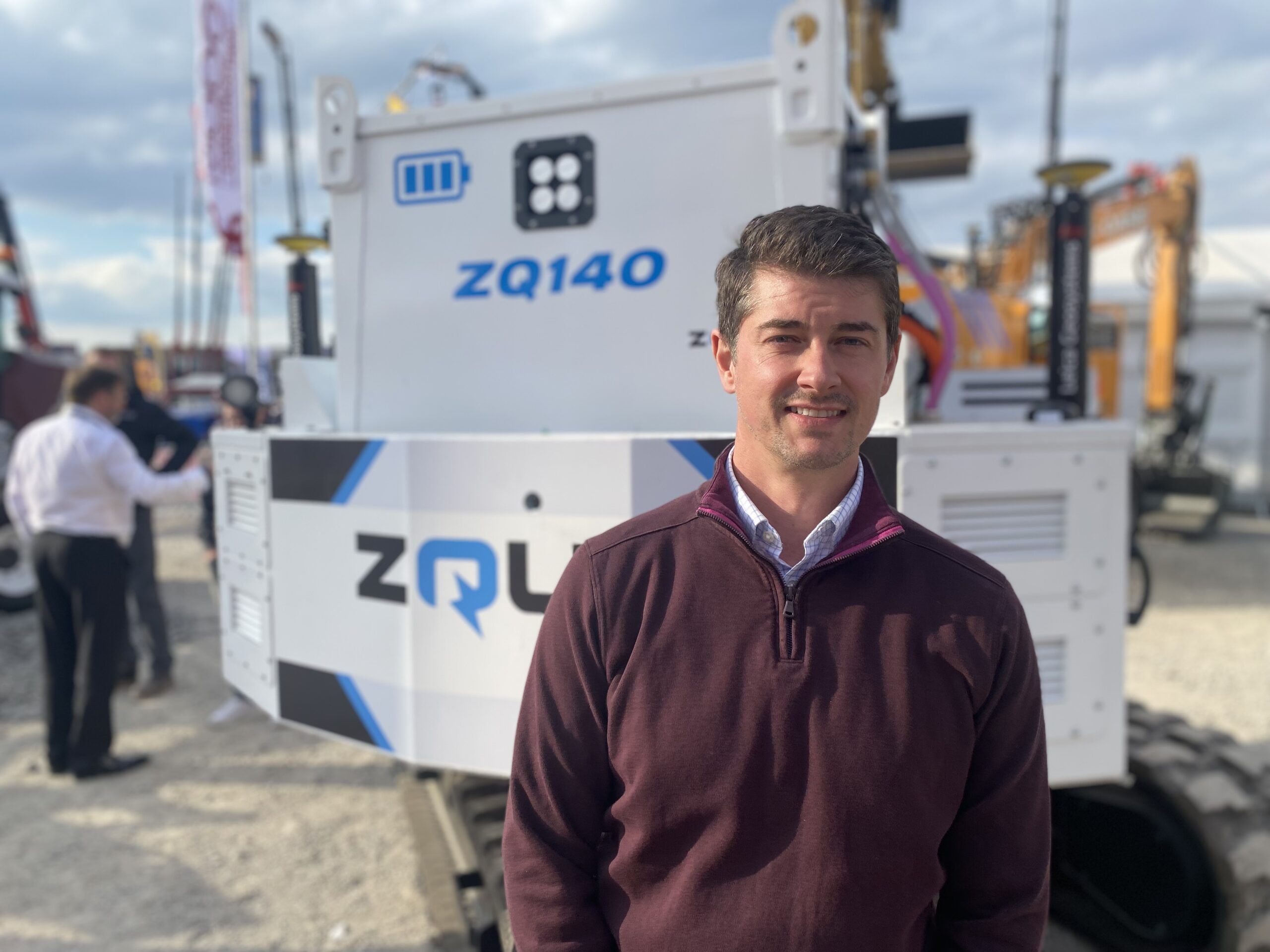
Low-emission vision
Whatever power configuration is opted for, reducing emissions remains a core principle of the ZQuip system. For extended runtime requirements, hybrid modules combine electric operation with diesel generation, but this still maintains reduced emissions compared to conventional diesel-hydraulic machines. “The excavators are always electric,” confirms Bauer. “The question is, where does the energy come from? In an optimum case, when you have a normal workday, you’re pulling all the energy out of a battery, and that’s a great day. Everything’s perfect. On the other hand, if you’re in a difficult site, or you have to work a lot of hours in a day, we give you options.”
The ZQuip system provides four distinct methods for ‘refuelling’: overnight charging, fast-charging, complete module swapping, and hybrid operation with continuous charging of batteries during work. This flexibility addresses the unpredictable nature of construction work. “We all know that in construction, things sometimes go sideways,” says Bauer. “So you start your day with one plan, but you end your day in a different plan. Maybe materials didn’t show up on time. Maybe the weather went bad.”
Unexpected situations require rapid reactions, and the ZQuip system allows operators to switch between full electric and hybrid operation to deliver operational continuity regardless of changing job site requirements. “The machine is field configurable in about three minutes,” says Bauer.
The modular architecture transforms maintenance operations by eliminating machine downtime during service. When hybrid modules require maintenance, the module can be removed and serviced off-site while the machine continues operating with alternative power sources.“In a conventional machine, if your power source is not working, you have to take the whole machine to a facility,” says Bauer. “In this machine, you simply pull that module out, you put it on a small truck, take it to a very simple, inexpensive garage and take care of that service. While that’s happening the machine’s still working.”
“We’ve successfully gone from concept to prototype and are now delivering these units to customers. We’ve solved the engineering challenges to create an entirely new world of construction, independent of which way future power needs take the industry”
A growing family
For Case Construction Equipment and its parent company, CNH Industrial, the ZQuip partnership represents a strategic expansion beyond existing compact electric offerings. “CNH has always been a leader in sustainability and we have a full range of compact electric vehicles, but we didn’t have a solution for heavy machinery until now,” says Egidio Galano, director of construction equipment product management for Europe at CNH Industrial.
The collaboration builds on an established relationship between the companies dating to 2019. Case’s 580EV electric backhoe loader, released in 2024 as the industry’s first production-ready purpose-built electric backhoe, utilizes Moog’s TerraTech platform for electric motion control. “The ZQuip solution allows us to quickly expand our reach to those customers that have a need for larger, zero-emission heavy equipment,” explains Franco Invernizzi, vice president and global head of CNH Construction Equipment Strategy.
The system’s engineering represents an achievement in standardization. All energy modules utilise identical mechanical and electrical interfaces, regardless of power source. The mechanical retention system employs a quick disconnect mechanism similar to bucket attachments commonly used in construction equipment. “There’s a mechanical lock,” Bauer explains. “So just a mechanical lock is very similar to the way a bucket is retained on to a quick disconnect on a machine. It’s a very similar mechanism. So it’s pretty simple, something that’s tried and true in the construction industry.”
The electrical interface consolidates high voltage, low voltage, and communication connections into a single touch-safe connector requiring no tools. Two quick-disconnect coolant connections complete the interface.
The system also provides data through in-cab displays and remote monitoring. Operators receive real-time vehicle information. This data remains accessible via mobile devices when operators are away from the machine.
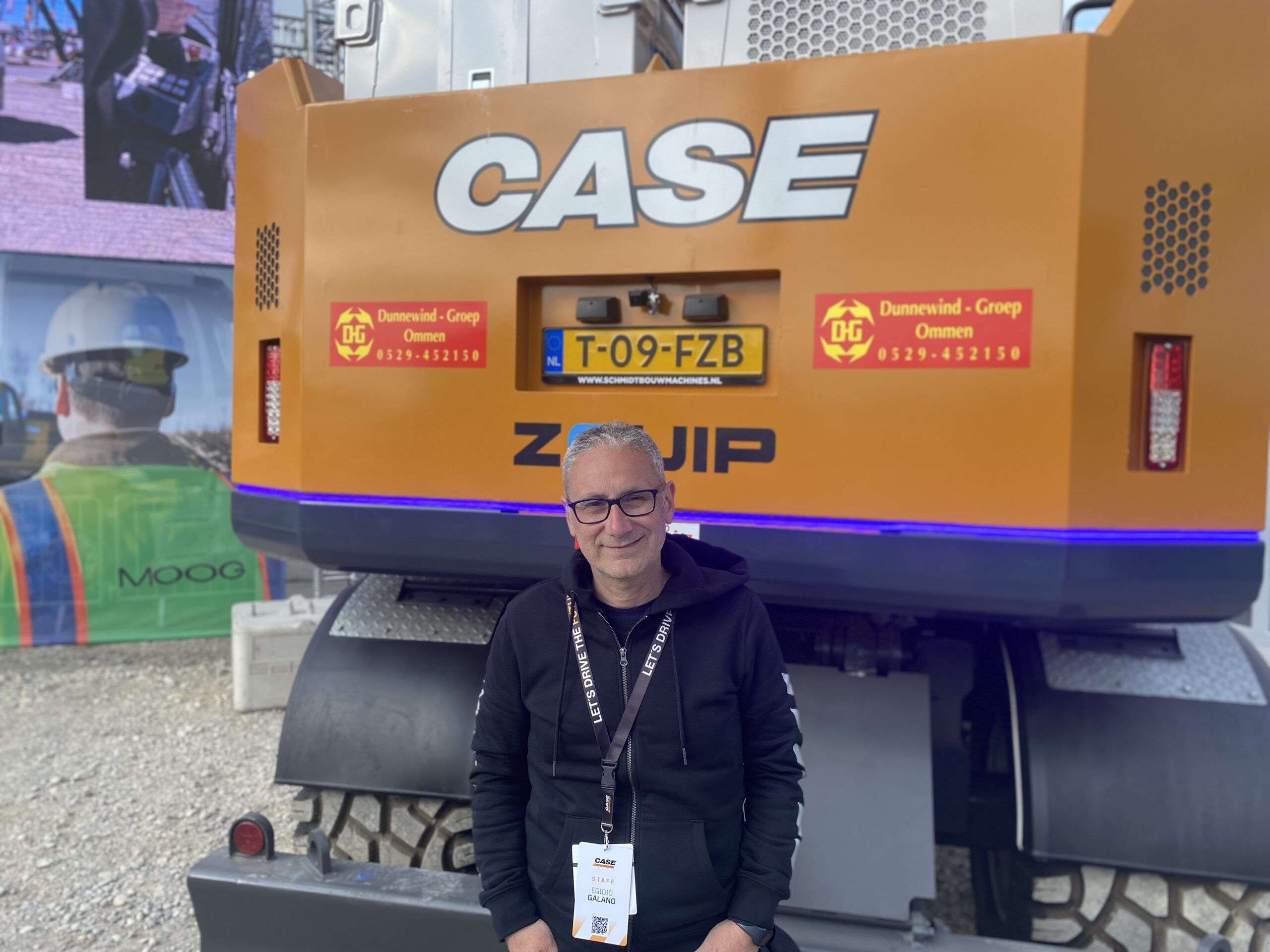
Real-world deployment
The transition from concept to production reflects strong customer interest. Netherlands-based Case dealer Schmidt Bouwmachines has begun accepting customer orders, while construction firm Dunnewind Groep, also in the Netherlands, has taken delivery of a WX155ZQ.
“We’ve successfully gone from concept to prototype and are now delivering these units to customers,” says LaFleur. “We’ve solved the engineering challenges to create an entirely new world of construction, independent of which way future power needs take the industry.”
The ZQuip system’s versatility extends beyond Case equipment. It is an OEM-agnostic system that ZQuip has already retrofitted in a variety of different machines for the rental sector. It has the capability to convert virtually any diesel hydraulic construction vehicle from 5 to 50 tonnes, and potential application to 70-tonne machines in certain configurations.
This broad compatibility, combined with the strategic partnership between established industry leaders, positions the modular power approach as a key development in the electrification of construction equipment. The collaboration demonstrates how innovative engineering solutions can address the challenges of electric transition while maintaining the flexibility that construction applications demand.


